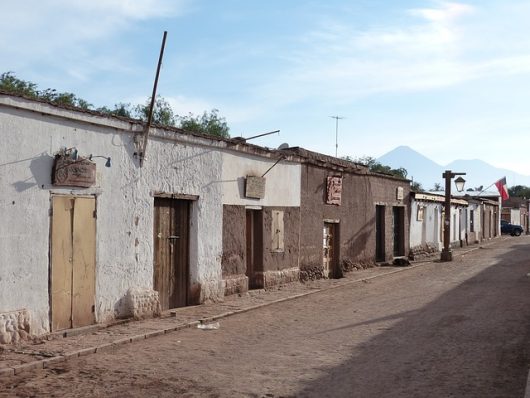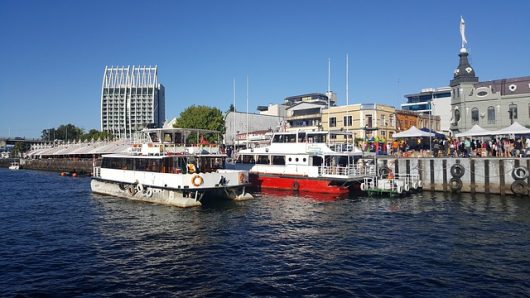 Wildfires in Chile have ravaged nearly 20,000 acres of land since Feb. 2. The Chilean National Disaster Prevention and Response Service (SENAPRED) reports that as of Feb. 5, out of 161 active fires, firefighters have contained 102, with 40 still being battled. This marks Chile’s deadliest wildfire incident, surpassing the devastation of the 2010 earthquake and tsunami, which claimed more than 500 lives and resulted in $30 billion in damages.
Wildfires in Chile have ravaged nearly 20,000 acres of land since Feb. 2. The Chilean National Disaster Prevention and Response Service (SENAPRED) reports that as of Feb. 5, out of 161 active fires, firefighters have contained 102, with 40 still being battled. This marks Chile’s deadliest wildfire incident, surpassing the devastation of the 2010 earthquake and tsunami, which claimed more than 500 lives and resulted in $30 billion in damages.
Geographic Challenge in Chile
Chile is victim to, not only wildfires but a great number of natural disasters, such as earthquakes, volcanic activity, droughts and floods. This is due to the country being located in the “Pacific Ring of Fire.” National Geographic reveals that 90% of all earthquakes across the globe occur on this path. Although these disasters often impact different locations, with wildfires occurring in forests and floods near rivers, the continuous risk of natural disasters has an enormous detrimental effect on the community, particularly minorities.
Wildfires in Chile: Poverty Cycle Intensified
These wildfires are not a one-off disaster. Some areas of Chile see an average of 3000-5000 fires each season. The constant risk of such disasters creates a poverty cycle that is very hard to escape. The 2024 wildfires in Chile destroyed up to 15,000 homes and left over 1600 people homeless. Many lost their livelihood alongside their homes as crops were turned to dust. These disasters have the power to drive people into poverty.
Those already living on a low income struggle to recover from such disasters altogether. Prevention Web suggests that “social exclusion” results in them being “overlooked during emergency responses.” Those suffering from poverty do not have the luxury of being able to afford insurance or put preventative measures in place. In previous incidents, education has been disrupted as schools are damaged by the blaze. Fires have also damaged water systems that ensure communities have safe drinking water.
Therefore, the impact of the fires extends further than the casualties and goes on to affect multiple poverty indicators.
Minority Vulnerability to Disasters
Minorities such as the elderly, women and children and those living with disabilities are disproportionately affected. For example, a single mother has been raising her 4-year-old son, Ignacio, who suffers from severe disabilities. Ignacio was born with cerebral palsy spastic diplegia and refractory epilepsy and severe dysphagia. The 2024 wildfires in Chile have taken everything from them. Most importantly Ignacio’s neurological wheelchair an “essential for her little one’s daily life.” Those in minority groups are often hit the hardest and must use limited resources to make up the loss which strengthens the grasp that poverty has on their lives.
Desafio Levantemos Chile
This charity helps communities in Chile get back on their feet after disasters like the wildfires. It has more than 700 projects across the country and has assisted in more than 24 emergencies. Usually one of the first on the ground after a disaster and has helped more than a million citizens in Chile in the 14 years it has been running. In the 2024 wildfires in Chile, the organization delivered hundreds of debris removal kits and thousands of liters of water. It acts as “the bridge between those who need help and those who want to help.”
Desafio Levantemos Chile has been a part of many initiatives to raise money for the 2024 wildfires in Chile. It created an online program with famous singers, actors and influencers, gathering more than 100,000 people online and raising more than 6 billion in total. The organization is also working with the Vina del Mar Festival to create the Arriba Vina campaign. This campaign aims to build 2000 emergency homes for those left homeless by the fires. This festival will take place from the 25th of Feb. to the 1st of March and host many artists. The charity is supporting those affected by the fires by using music and TV to raise awareness and funds.
Rebuilding Hope Amid Flames
In the wake of the devastating wildfires in Chile, the resilience of communities and the pivotal role of organizations like Desafio Levantemos Chile highlight a beacon of hope for recovery and rebuilding. Through innovative fundraising and direct aid, this charity is significantly aiding those affected, proving the power of solidarity in overcoming disaster. The collective efforts to support vulnerable groups and reconstruct homes underscore a commitment to not only restore what was lost but also to fortify the nation against future adversities.
– Liz Johnson
Photo: Unsplash
 With the
With the In Chile, from 1973 to 1990, systemic human rights violations swept the nation under General Augusto Pinochet, including acts of physical and sexual abuse as well as psychological damage. Consequently, many progressive young students and men “disappeared” at the hands of the regime because of their ideology. While a grim history, hope can be found in the subsequent actions of women. The Arpilleristas were able to overcome such hardships through tapestry weaving.
In Chile, from 1973 to 1990, systemic human rights violations swept the nation under General Augusto Pinochet, including acts of physical and sexual abuse as well as psychological damage. Consequently, many progressive young students and men “disappeared” at the hands of the regime because of their ideology. While a grim history, hope can be found in the subsequent actions of women. The Arpilleristas were able to overcome such hardships through tapestry weaving.

 The number of people living below the national
The number of people living below the national 



